Technologies
Oppo Says Its Find X6 Pro Phone Doesn’t Have a Main Camera
Instead, the company’s says all three of its rear cameras on the Find X6 Pro have main camera qualities.
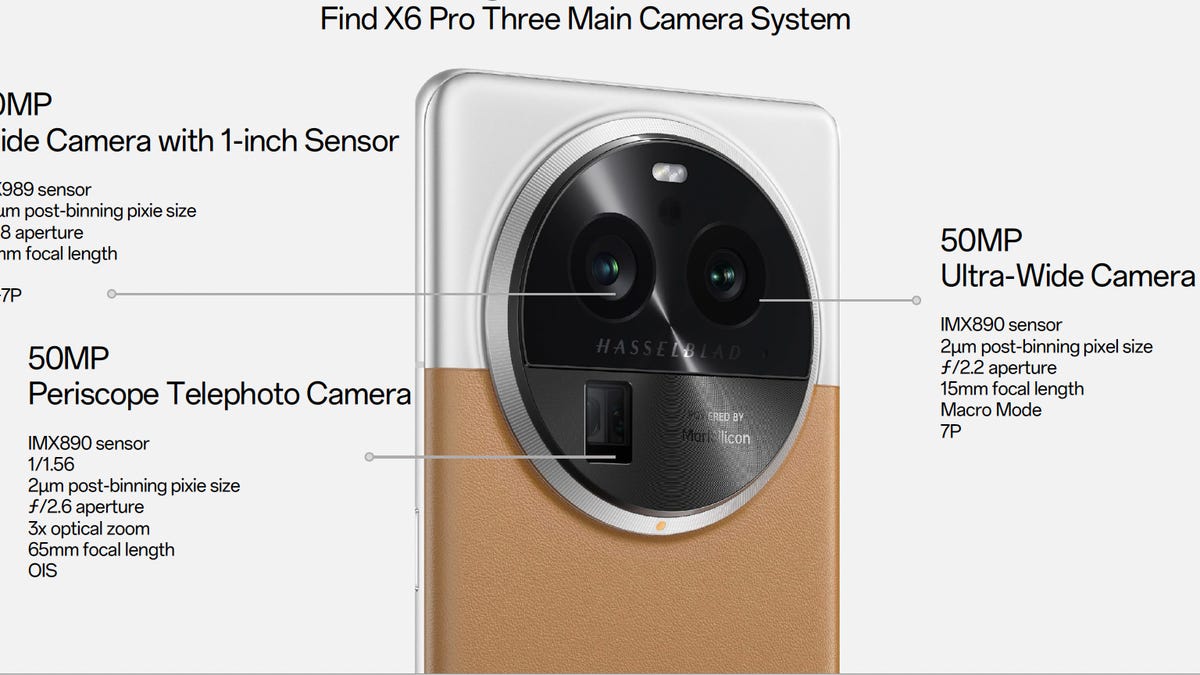
Oppo’s first flagship series of 2023 has arrived. The Chinese company unveiled the Find X6 series in China on Tuesday, which it says ushers in an «all-new three main cameras era» moving past a focus on a single main camera among smartphones.
The higher-end Find X6 Pro features a trio of 50-megapixel rear cameras, which Oppo co-developed with Hasselblad. It’s made up of a wide-angle camera complete with a large 1-inch sensor, a periscope-style telephoto camera that Oppo says has the largest sensor of any smartphone telephoto camera, and finally an ultrawide camera that can make detail-filled macro images. The Find X6 Pro uses a glass and aluminum lens cover, which Oppo says is drop and corrosion resistant to protect the three cameras housed inside. On the frontside, housed in a punch-hole notch is a 32-megapixel selfie camera.
Apart from the camera system, Oppo made sure to pack its Find X6 Pro with features that’ll make it a compelling Android flagship in 2023. The Find X6 Pro’s 6 has the brightest phone screen on perhaps any commercially sold phone (2,500 nits), a cutting-edge Snapdragon 8 Gen Plus 2 processor, a large battery, and fast charging in both wireless and wired capacities, which promise to revitalize the device’s dead battery in 30 minutes and 51 minutes respectively.
Oppo seems to have made efforts to create a durable flagship too. The front display uses Corning’s newest Gorilla Glass Victus 2, which apparently improved drop protection by up to 30% — whatever that means. It also has an IP68 rating for water- and dust-resistance, which means it’s protected from dust getting inside and can withstand being submerged in water. Samsung’s Galaxy S23 lineup has the same rating. So does the iPhone 14 lineup. Oppo says the battery will retain 80% of original capacity after four years despite fast charging.
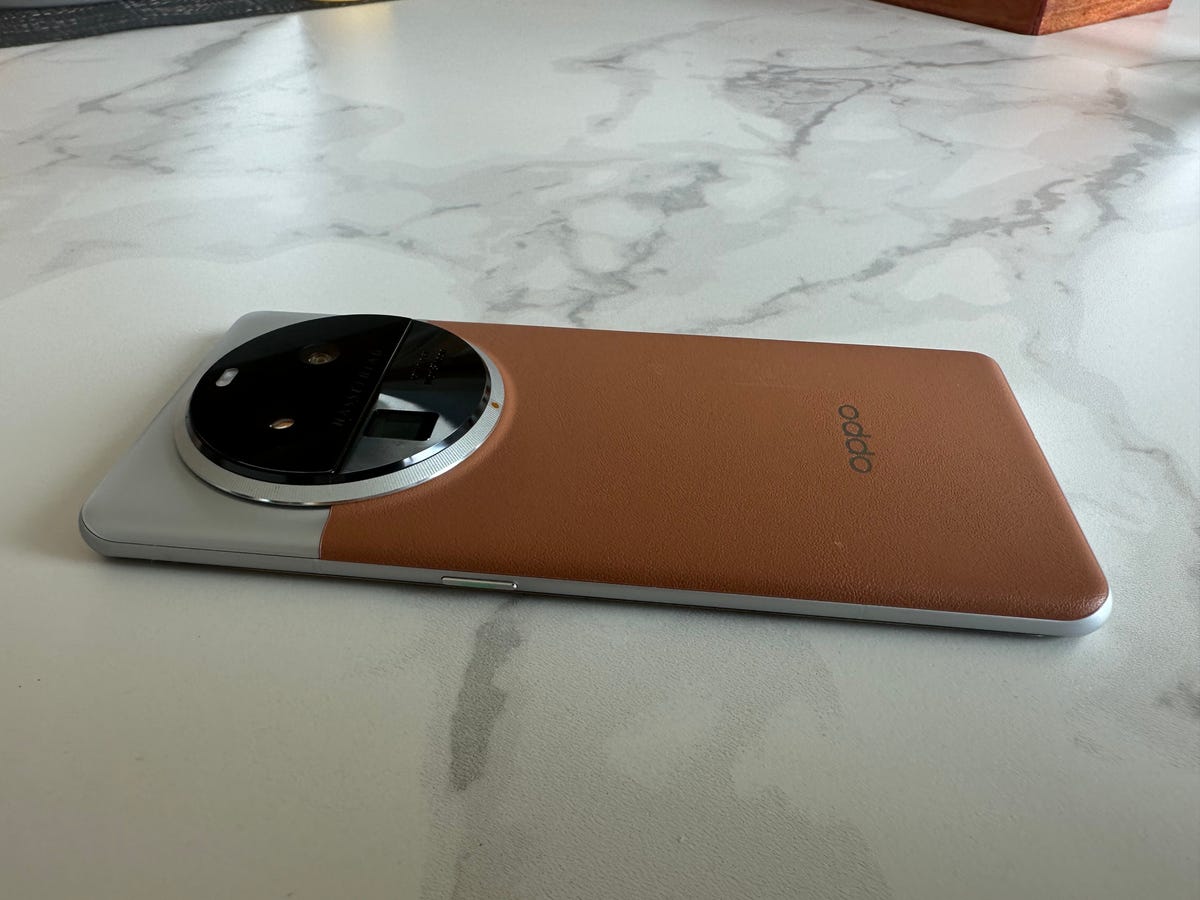

You’re looking at the vegan leather finish of the Oppo Find X6 Pro. There are two other available colors.
Sareena Dayaram/CNETOppo says there are no current plans to release the Find X6 series internationally. Ahead of its China launch, Oppo sent me the Chinese version of the Find X6 Pro. In the limited time I had with the phone, I focused on testing the rear camera module, the headline feature of this device. No pricing details were made available at the time of this writing.
Find X6 Pro’s ultrawide camera
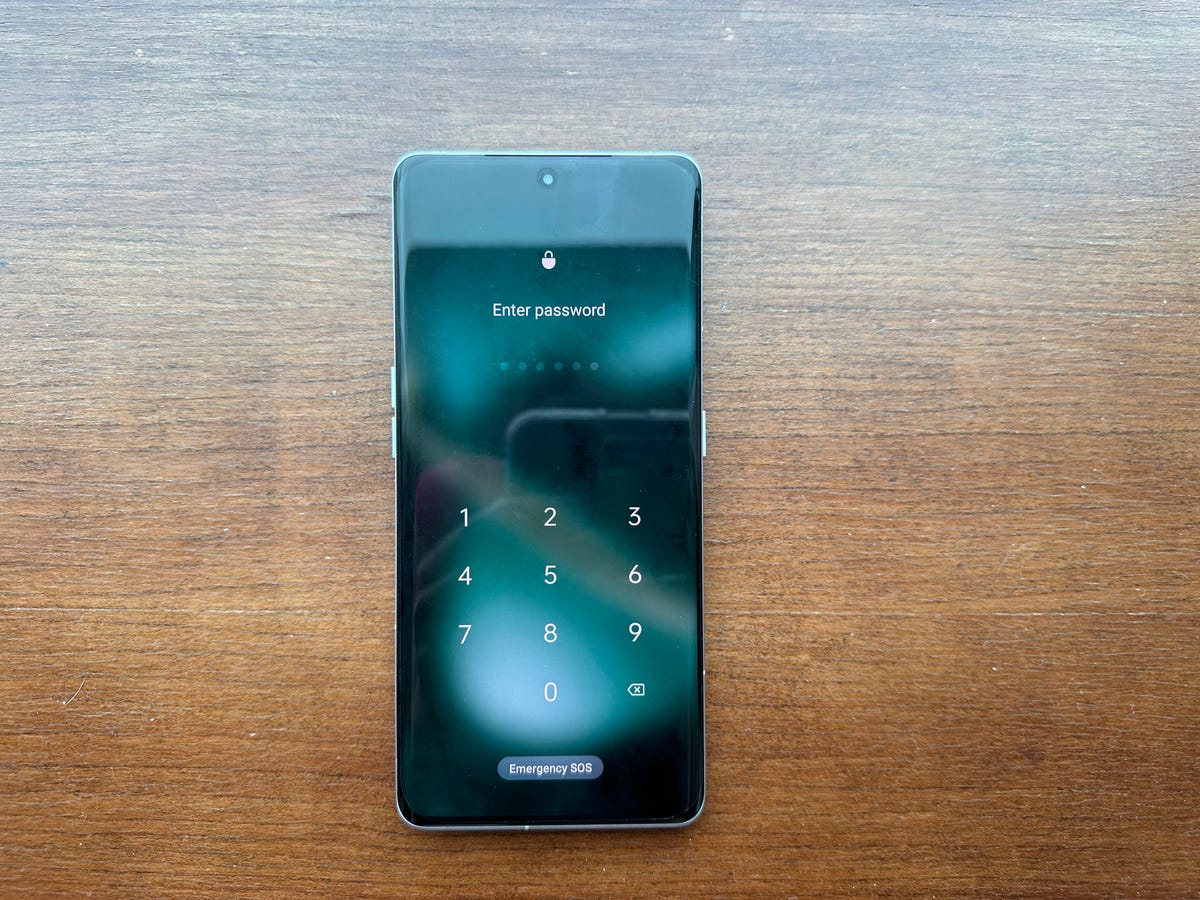

The Find X6 Pro has a 120Hz display.
Sareena Dayaram/CNETThe 50-megapixel ultra-wide camera is located on the upper right of the circular camera bump. It has a focal length equivalent of 15mm and a f/2.2 aperture. One of my favorite ways to use this camera was macro mode. I’ve long been a fan of Oppo’s Macro mode, and this time around was no exception. It’s easy to take close-up shots and the camera can swiftly auto-focus on your subject whether it’s light or dark. I was amazed that this phone could take lovely macro images in low light using the ultrawide camera, and it gave long-distance photos a beautiful natural depth of field. Scroll down past the text to see the cameras in action.
Find X6 Pro’s telephoto camera
The Find X6 Pro has a periscope style-telephoto lens, which has a large Sony IMX 980 sensor and an aperture of f/2.6, which Oppo says is the largest of any periscope-style telephoto camera. Telephoto cameras are crucial for taking clear pictures of faraway subjects — and the one of the Find X6 Pro is impressive. You can see some samples if you scroll down. The Find X6 Pro allows for 6x optical zoom and 120x digital zoom. For context, the iPhone 14 Pro Max has 3x optical zoom and 15x digital zoom, while Samsung’s Galaxy S23 Ultra has 10x optical zoom and 100x digital zoom.
Find X6 Pro’s wide camera
The wide camera uses Sony’s IMX 989 sensor, which is the same 1-inch sensor found on the Sony Xperia Pro-I, Xiaomi’s 12S Ultra, Vivo’s X90 Pro flagship phone. A 1-inch camera sensor isn’t actually 1 inch big, but it’s certainly on the larger size for a phone camera. What’s commendable is that Oppo was able to fit a 1-inch sensor into a phone body that’s roughly the same thickness as an iPhone 1 Pro Max, but more than 20 grams lighter.
A larger sensor means a wider dynamic range and improved low-light performance for both photos and videos. Oppo says the Find X6 Pro’s sensor is 156% larger than the Find X5 Pro, it can take in as much as 142% more light. I can’t independently verify that statement, but in my experience with this camera, it took wonderful photos in both dark and light conditions. Apart from the larger sensor, the ultrawide camera also has a f/1.8 aperture. Right below you’ll find some photos taken with the Find X6 Pro as well as a specs sheet.


Taken on default settings.
Sareena Dayaram/CNET

6x optical zoom example. Zoomed in from the image above.
Sareena Dayaram/CNET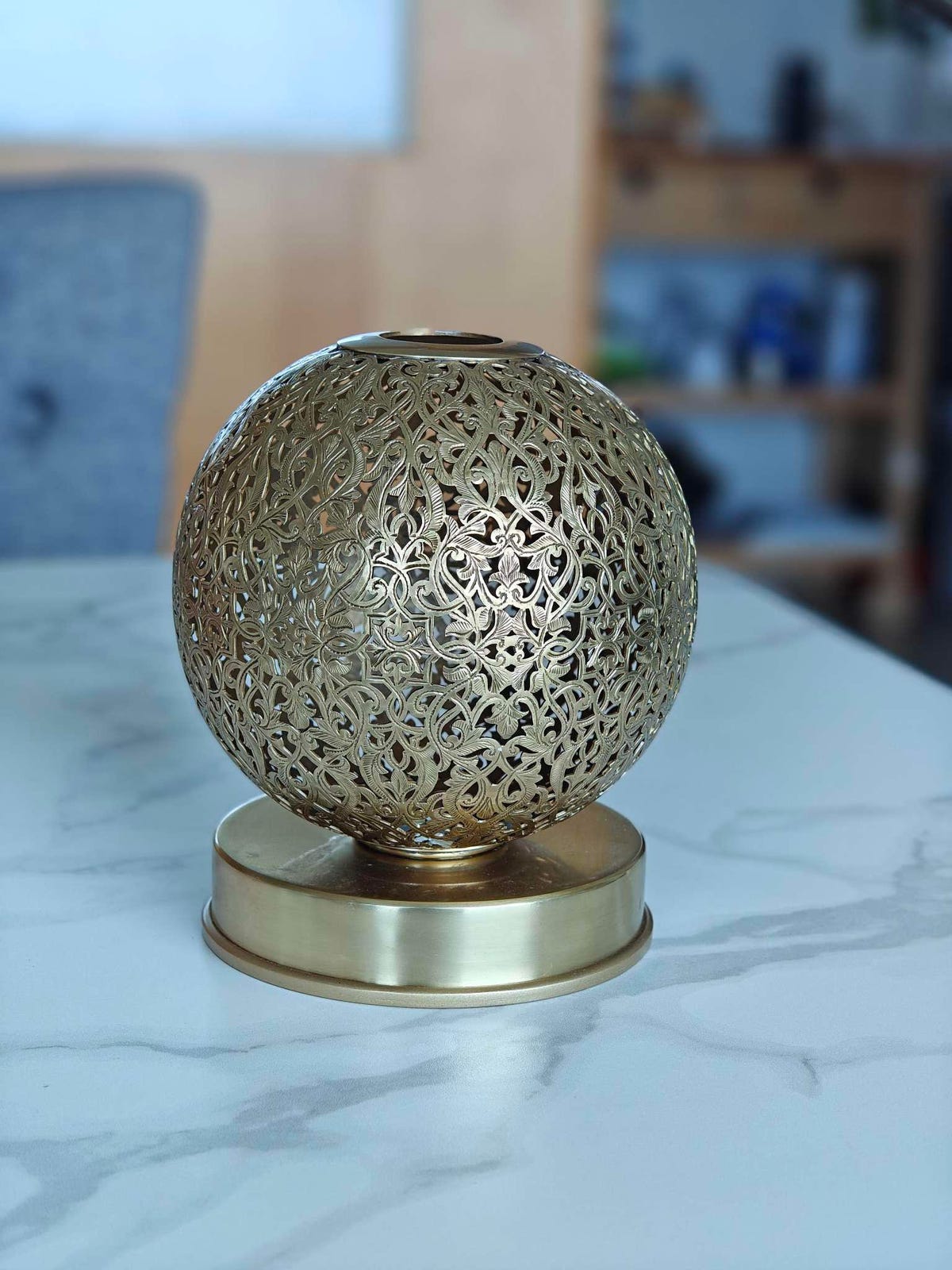

Portrait shot taken of this Moroccan lamp. Notice the depth of field and how the lamp is subtly made to be the focus of this image.
Sareena Dayaram/CNET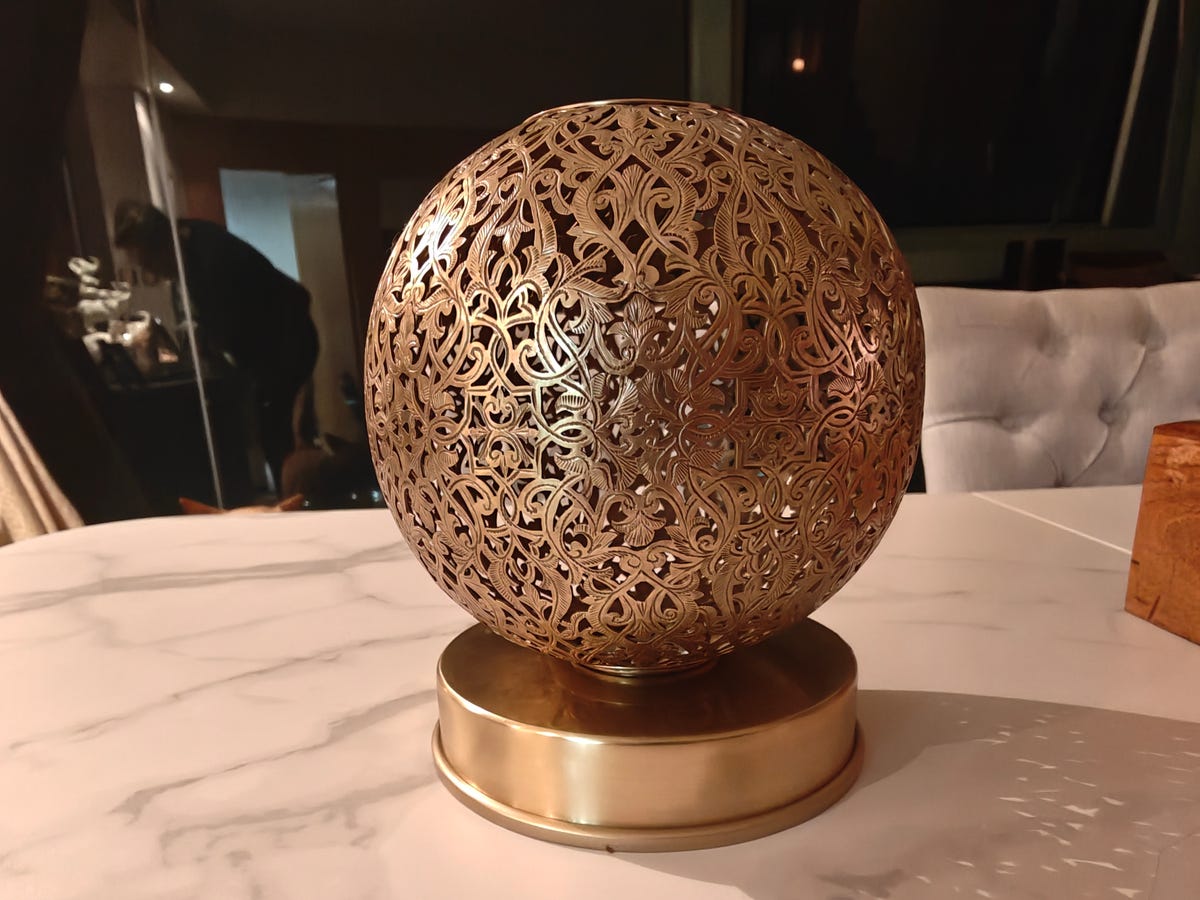

Even though this was taken in a dark room, the camera manages to capture the intricate detail of this Morrocan lamp. It’s also color accurate.
Sareena Dayaram/CNET

Example of macro mode. Notice the veins on the petals of the bougainvillea.
Sareena Dayaram/CNET

Macro photo taken in a dark room
Sareena Dayaram/CNET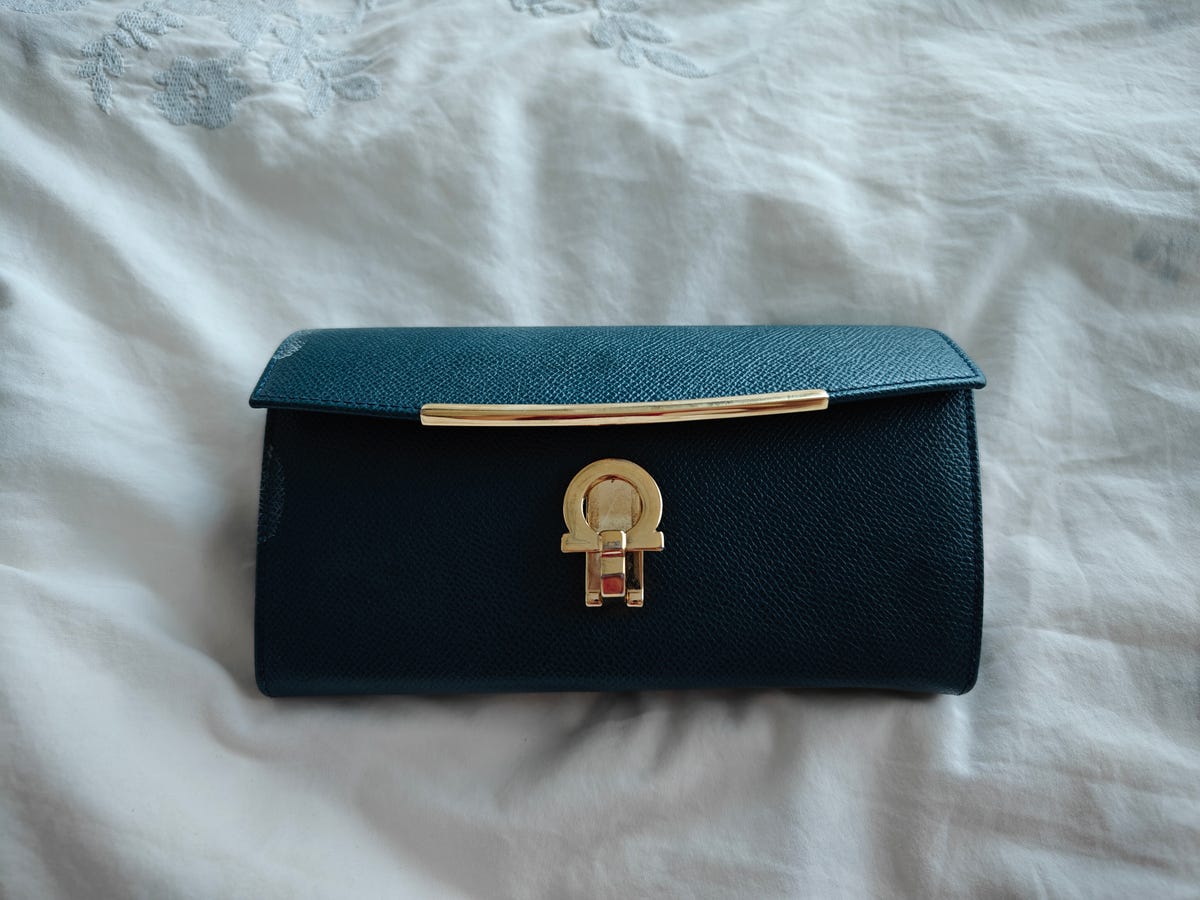

Compare the colors of this image with the one below, which was taken with the iPhone 14 Pro Max. Which one do you like better?
Sareena Dayaram/CNET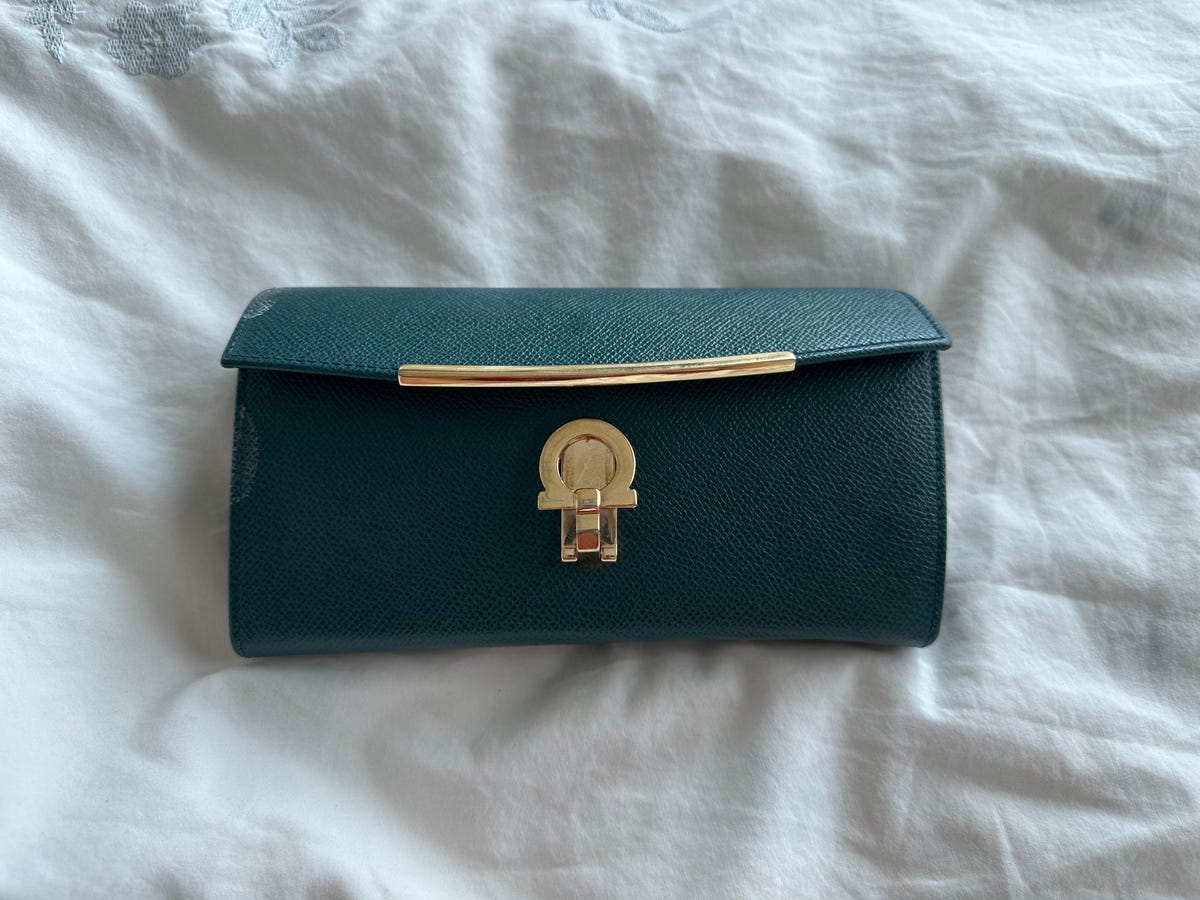

This image was taken with my iPhone 14 Pro Max. I think it captures a clearer image than the Find X6 Pro and is more color accurate.
Sareena Dayaram/CNET



Example of 6x optical zoom. Notice how crisp the image remains despite how far zoomed in this image is compared to the image above.
Sareena Dayaram/CNETOppo Find X6 Pro specs
| Find X6 Pro | |
| Display size, resolution, refresh rate | 6.82-inch AMOLED (3,168×1,440 pixels) |
| Pixel density | 510ppi |
| Dimensions (Millimeters) | 164.8mm × 76.3mm × 9.5mm (vegan leather) |
| Weight (Ounces, Grams) | 216g 218g |
| Mobile software | Android 13 |
| Camera | 50-megapixel (wide), 50-megapixel (ultrawide), 50 megapixel (telephoto) |
| Front-facing camera | 32-megapixel |
| Video capture | 4K |
| Processor | Snapdragon 8 Gen Plus 2 |
| Storage/RAM | 12GB+256GB (only for black and green version) • 16GB+256GB • 16GB+512GB |
| Expandable storage | None |
| Battery/Charger | 5,000 mAh |
| Fingerprint sensor | Display |
| Connector | USB-C |
| Headphone jack | None |
| Special features | 6x optical zoom, 120x digital zoom, IP68 rating, fast charing |
| Price | TBC |
Technologies
What a Ban Would Actually Mean for DJI Drone Owners and Holiday Shoppers
What’s the secret to a very un-merry shopping season? A brand new, unusable drone.
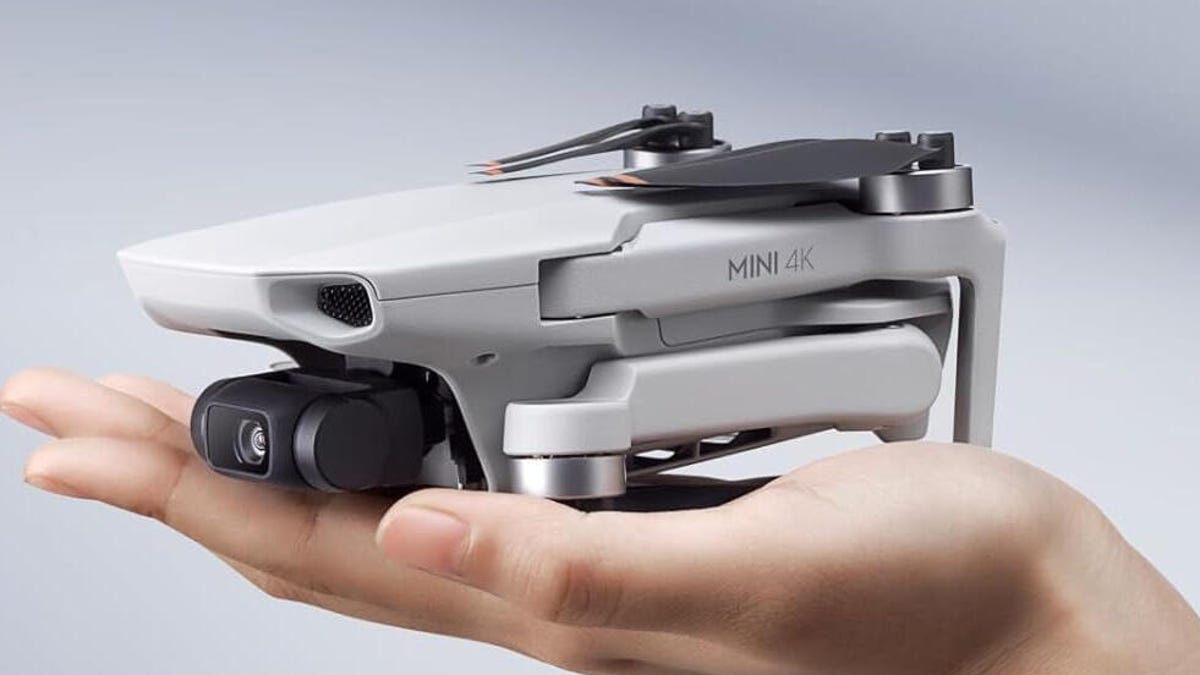
With Thanksgiving wrapped up and the Black Friday shopping sales here, if a DJI drone is on your holiday wish list, you might want to hit «buy» immediately. The company has issued a stark warning: Its drones could be banned from sale in the US, and the deadline is looming.
The Federal Communications Commission voted 3-0 at the end of October to «close loopholes» that allow tech deemed a «national security risk» to be sold in the US. In plain English, the US government is clearing the path to give DJI the same treatment it gave Chinese phone-maker Huawei, effectively banning its products from the American market.
The US government has deemed DJI, which is based in China, a security risk. It’s also considering a separate ban on TP-Link routers.
DJI is already sounding the alarm, posting on Instagram that a «deadline that could decide DJI’s fate in the US is just 43 days away» (now 19 days away). The company is warning that without an audit, its products could face an «automatic ban.» The US government has long labeled the Chinese drone maker a security risk, and it looks like the hammer might finally be coming down right before the holidays.
Don’t miss any of our unbiased tech content and lab-based reviews. Add CNET as a preferred Google source.
The vote isn’t the end of the road, however. Future bans would need to target specific products and would require a period of public consultation. But it appears the groundwork is being set for the FCC to block sales of future and some existing DJI drones from US shores, as well as products that use DJI technology.
The government has called for a DJI audit by the end of the year, but if that doesn’t happen, DJI drone products could be banned for sale by default under a national security law.
DJI asks for a security audit before any ban
A representative for DJI told CNET that while the FCC vote references a rule change that doesn’t currently apply to DJI specifically, the National Defense Authorization Act deadline in December would put Chinese companies like it on the FCC’s ban list, «without any evidence of wrongdoing or the right to appeal.»
Adam Welsh, head of global policy at DJI, said the company has repeatedly said it would be open to audit, but that «more than 10 months have now passed with no sign that the process has begun.»
«The US government has every right to strengthen national security measures, but this must go hand in hand with due process, fairness, and transparency,» Welsh said.
Welsh said DJI is urging the government to start the audit process or grant an extension.
Will DJI drone owners need to give them up?
Because the ban would apply to new sales, not drones that have already been sold, a DJI drone you already own would still be legal to use — at least under current rules.
Government agencies, however, are prohibited from purchasing or using drones from Chinese companies, including DJI.
DJI’s drones consistently rank high in their product category. In January, they dominated CNET’s list of best drones for 2025. But some of the company’s newest products, such as the DJI Mavic 4 Pro, haven’t been available for sale in the United States.
Even DJI products that are not yet banned may be hard to find. The website UAV Coach has posted a guide to the bans and reports that, due to inventory issues, most DJI drone models are sold out at retailers regardless of future FCC action.
Technologies
Today’s NYT Strands Hints, Answers and Help for Nov. 29 #636
Here are hints and answers for the NYT Strands puzzle for Nov. 29, No. 636.
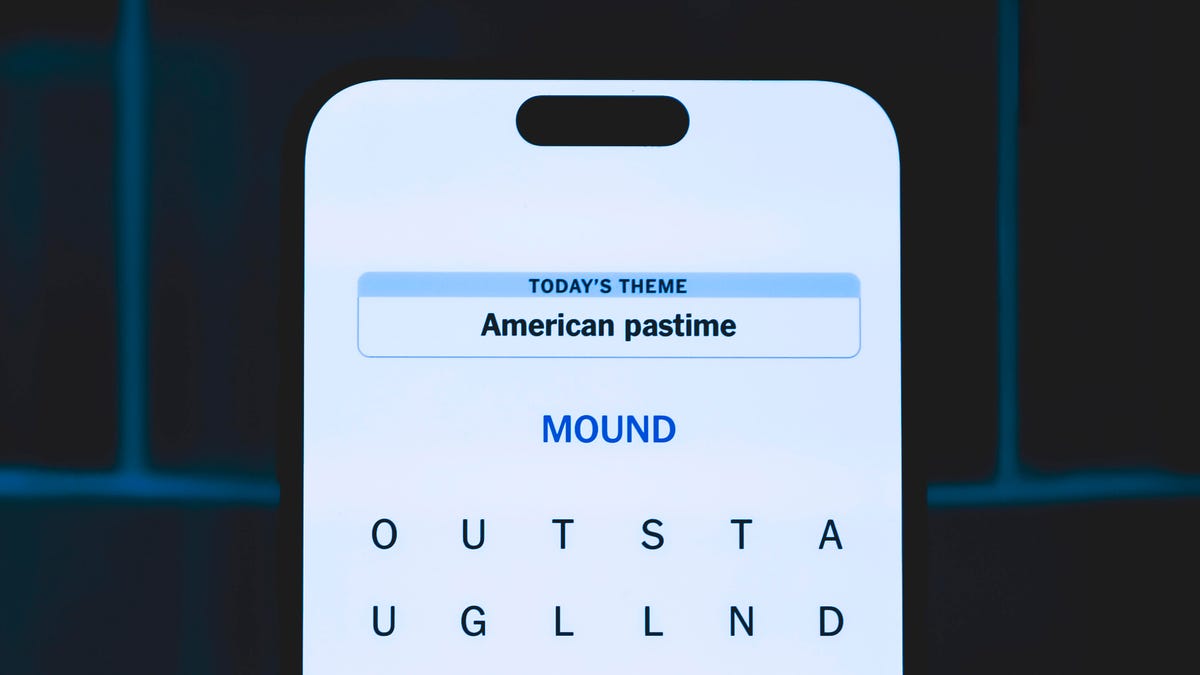
Looking for the most recent Strands answer? Click here for our daily Strands hints, as well as our daily answers and hints for The New York Times Mini Crossword, Wordle, Connections and Connections: Sports Edition puzzles.
Today’s NYT Strands puzzle is a real puzzler. Some of the answers are difficult to unscramble, so if you need hints and answers, read on.
I go into depth about the rules for Strands in this story.
If you’re looking for today’s Wordle, Connections and Mini Crossword answers, you can visit CNET’s NYT puzzle hints page.
Read more: NYT Connections Turns 1: These Are the 5 Toughest Puzzles So Far
Hint for today’s Strands puzzle
Today’s Strands theme is: What a piece of work!
If that doesn’t help you, here’s a clue: You can build it in a shop.
Clue words to unlock in-game hints
Your goal is to find hidden words that fit the puzzle’s theme. If you’re stuck, find any words you can. Every time you find three words of four letters or more, Strands will reveal one of the theme words. These are the words I used to get those hints but any words of four or more letters that you find will work:
- CREW, REAM, LANE, WHEE, DELL, CANE, PULL, REVEL
Answers for today’s Strands puzzle
These are the answers that tie into the theme. The goal of the puzzle is to find them all, including the spangram, a theme word that reaches from one side of the puzzle to the other. When you have all of them (I originally thought there were always eight but learned that the number can vary), every letter on the board will be used. Here are the nonspangram answers:
- WHEEL, AXLE, LEVER, WEDGE, PLANE, PULLEY, SCREW
Today’s Strands spangram
Today’s Strands spangram is SIMPLEMACHINE. To find it, start with the S that’s three letters to the right on the top row, and wind over and down.
Technologies
Today’s NYT Connections Hints, Answers and Help for Nov. 29, #902
Here are some hints and the answers for the NYT Connections puzzle for Nov. 29, #902.
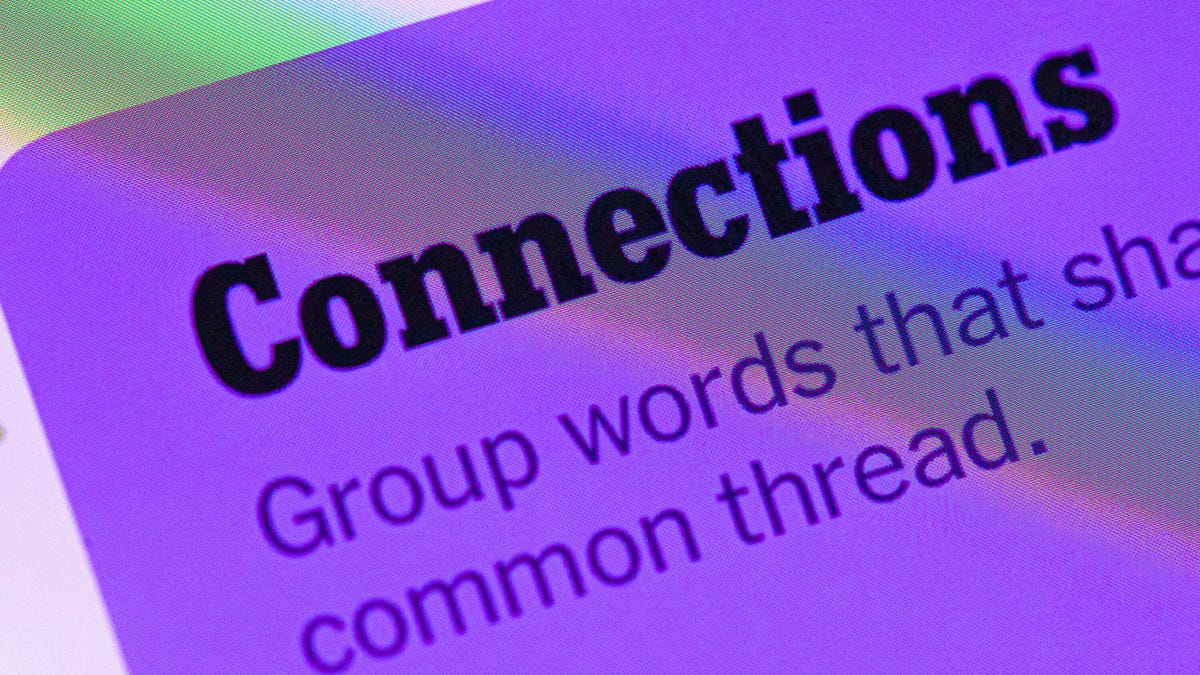
Looking for the most recent Connections answers? Click here for today’s Connections hints, as well as our daily answers and hints for The New York Times Mini Crossword, Wordle, Connections: Sports Edition and Strands puzzles.
Today’s NYT Connections puzzle is tough. If you need help sorting them into groups, you’re in the right place. Read on for clues and today’s Connections answers.
The Times now has a Connections Bot, like the one for Wordle. Go there after you play to receive a numeric score and to have the program analyze your answers. Players who are registered with the Times Games section can now nerd out by following their progress, including the number of puzzles completed, win rate, number of times they nabbed a perfect score and their win streak.
Read more: Hints, Tips and Strategies to Help You Win at NYT Connections Every Time
Hints for today’s Connections groups
Here are four hints for the groupings in today’s Connections puzzle, ranked from the easiest yellow group to the tough (and sometimes bizarre) purple group.
Yellow group hint: Middle of the body.
Green group hint: Fill-in.
Blue group hint: Nice place to hang out.
Purple group hint: Card game.
Answers for today’s Connections groups
Yellow group: Abdominal area.
Green group: Replacement.
Blue group: Park staples.
Purple group: Blackjack terms.
Read more: Wordle Cheat Sheet: Here Are the Most Popular Letters Used in English Words
What are today’s Connections answers?
The yellow words in today’s Connections
The theme is abdominal area. The four answers are core, midsection, torso and trunk.
The green words in today’s Connections
The theme is replacement. The four answers are backup, cover, relief and substitute.
The blue words in today’s Connections
The theme is park staples. The four answers are bench, pigeon, statue and tree.
The purple words in today’s Connections
The theme is blackjack terms. The four answers are bust, hit, split and stand.
-

 Technologies3 года ago
Technologies3 года agoTech Companies Need to Be Held Accountable for Security, Experts Say
-

 Technologies3 года ago
Technologies3 года agoBest Handheld Game Console in 2023
-

 Technologies3 года ago
Technologies3 года agoTighten Up Your VR Game With the Best Head Straps for Quest 2
-

 Technologies4 года ago
Technologies4 года agoBlack Friday 2021: The best deals on TVs, headphones, kitchenware, and more
-

 Technologies4 года ago
Technologies4 года agoVerum, Wickr and Threema: next generation secured messengers
-

 Technologies4 года ago
Technologies4 года agoGoogle to require vaccinations as Silicon Valley rethinks return-to-office policies
-

 Technologies4 года ago
Technologies4 года agoOlivia Harlan Dekker for Verum Messenger
-

 Technologies4 года ago
Technologies4 года agoiPhone 13 event: How to watch Apple’s big announcement tomorrow
